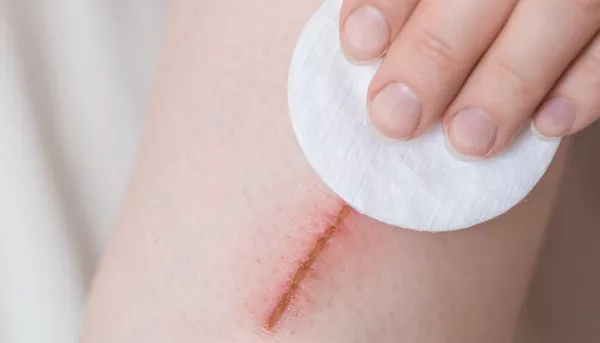Scars. They can be the remnants of battles fought both on the inside and the outside. Whether it’s a result of a surgical procedure, an unfortunate accident, or the lingering aftermath of an acne breakout, scars tell stories of resilience and healing. For many, scars are more than just physical marks; they are emotional reminders of past struggles. In this article, we will delve deep into the world of scar management and explore the intriguing question: Can soap effectively remove scars? Join us on this journey as we investigate the role of soap in scar removal, debunk myths, and uncover the science behind achieving smoother, scar-free skin.
Understanding Scars: A Constant Reminder
Before we delve into the world of scar removal, let’s take a moment to understand what scars are. Scars are the result of the body’s natural healing process. When the skin is injured, whether by a cut, burn, or surgery, the body rushes to repair the damage. During this process, collagen, a protein responsible for skin’s strength and elasticity, is produced in excess. This excess collagen can lead to the formation of scars.
The Quest for Scarless Skin
The desire for clear, scar-free skin has been a pursuit of humankind for centuries. Ancient civilizations, from the Egyptians to the Greeks, had their own remedies and potions to address scars. However, it wasn’t until modern times that science began to unravel the complexities of scar formation and removal. The mention of “scars” in historical texts and the evolution of scar management techniques underscore the persistent human fascination with achieving flawless skin.
The Role of Soap in Scar Management: A Surprising Contender
When discussing scar removal, soap might not be the first thing that comes to mind. We often associate soap with cleanliness and hygiene, but its potential role in scar management is a lesser-known aspect. Can soap, a household staple, truly make a difference in the appearance of scars?
The Basics of Scar Management: Prevention and Treatment
Before we explore soap’s potential in scar removal, it’s crucial to grasp the fundamentals of scar management. Prevention and early intervention are key strategies in scar management, and they should always be a part of the discussion when addressing scars.
Preventing Scars: The First Line of Defense
Preventing scars from forming in the first place is the ideal scenario. This is particularly relevant for wounds resulting from surgical procedures. Surgeons employ various techniques to minimize scarring during surgery, such as using precise incisions and sutures that minimize tension on the skin. For surgical scars, scars is often associated with strategies like proper wound care and surgical techniques to prevent them from becoming too prominent.
Early Intervention: Tackling Scars in Their Infancy
Sometimes, despite our best efforts, scars still form. In such cases, early intervention becomes crucial. When scars are still in their infancy, they are often easier to manage and treat. These interventions typically involve topical treatments, such as creams, ointments, and yes, soap.
The Role of Soap in Scar Prevention: Debunking Myths
Now, let’s address the elephant in the room: the use of soap in scar prevention. You may have heard conflicting opinions on whether soap can prevent scars or exacerbate them. To understand this better, let’s explore some common myths associated with soap and scars.
Myth 1: Soap Can Prevent Scars
One prevailing myth is that using soap immediately after sustaining an injury can prevent scars from forming. While cleanliness is essential for wound healing, it’s essential to clarify that soap alone cannot prevent scars. Scars is often used in misleading contexts, leading people to believe that a simple act of washing with soap will make scars vanish.
Myth 2: All Soaps Are Created Equal
Another misconception is that any soap can be used to prevent scars effectively. The reality is that not all soaps are created equal, and the choice of soap matters significantly when it comes to scar management.
Myth 3: Vigorous Scrubbing Is the Key
Some people believe that vigorous scrubbing with soap on a wound will prevent scars. This approach, however, is counterproductive. Aggressive scrubbing can damage the delicate healing tissue and increase the risk of infection, potentially leading to more prominent scars.
The Science Behind Soap and Scars
To demystify the role of soap in scar prevention, let’s turn to the science behind it. Scars might evoke skepticism, but understanding the principles of wound healing can shed light on how soap fits into the equation.
The Wound Healing Process
Wound healing is a complex, highly orchestrated process involving multiple stages. Understanding these stages is crucial to grasp how soap can influence scar formation.
Inflammation: The Initial Response
When the skin is injured, the body’s first response is inflammation. This phase is marked by increased blood flow, white blood cell migration, and the removal of debris from the wound site. Inflammation is essential for initiating the healing process and preventing infection.
Proliferation: Rebuilding Tissue
During the proliferation phase, the body works to rebuild damaged tissue. Collagen production increases, and new blood vessels form to support healing. At this stage, proper wound care becomes crucial, but soap isn’t typically the primary focus when discussing scar prevention. Instead, the emphasis is on keeping the wound clean and moist.
Remodeling: Shaping the Scar
The final stage of wound healing is remodeling, where the body refines the scar tissue. Collagen fibers are rearranged and gradually replaced with stronger, more organized tissue. This phase is where soap can potentially play a role in scar management.
How Soap Can Aid in Scar Management
Soap can be beneficial during the remodeling phase of wound healing. This is the stage where the word “scars” becomes more relevant, as it’s when scar tissue is being shaped and refined. Here’s how soap can aid in scar management:
1. Keeping the Wound Clean
Soap’s primary function is to cleanse. By keeping the wound clean, soap helps prevent infection, which can worsen scars. However, it’s essential to use a mild, non-irritating soap specially formulated for wounds.
2. Softening and Hydrating Scar Tissue
Dry, rigid scar tissue can be uncomfortable and visually prominent. Some soaps, particularly those containing moisturizing ingredients like glycerin or aloe vera, can help soften and hydrate scar tissue, making it less noticeable.
3. Removing Excess Oils and Debris
Soap can also assist in removing excess oils and debris from the scar site. This can be particularly helpful for scars resulting from acne breakouts, where sebum buildup can exacerbate scar appearance.
Choosing the Right Soap for Scar Management
Not all soaps are suitable for scar management. When selecting a soap for wound care or scar prevention, consider the following factors:
1. Mildness: Look for a mild, hypoallergenic soap without harsh chemicals or fragrances. Harsh soaps can irritate the skin and potentially worsen scarring.
2. Moisturizing Ingredients: Opt for soaps that contain moisturizing ingredients like glycerin, aloe vera, or shea butter. These ingredients can help keep the scar tissue hydrated.
3. Dermatologist Recommendations: If you’re unsure about which soap to use for scar management, consult a dermatologist. They can recommend specific products based on your skin type and the type of scar you have.
The Importance of Patience in Scar Management
It’s crucial to understand that scar management is not a quick fix. Achieving significant improvements in scar appearance takes time and consistent care.
Combining Soap with Other Scar Management Techniques
While soap can play a supportive role in scar management, it’s rarely the sole solution. Achieving the best results often requires a multifaceted approach. Let’s explore some additional scar management techniques that can complement the use of soap.
1. Silicone Gel Sheets and Creams
Silicone gel sheets and creams have been extensively studied for their effectiveness in scar management. They create a barrier over the scar, helping to lock in moisture and promote a smoother texture. Combining silicone products with soap can be a powerful strategy.
2. Massage
Scar massage involves gently massaging the scar tissue to break down collagen fibers and improve blood flow. This technique can be particularly beneficial for raised or hypertrophic scars. Using a moisturizing soap during massage can enhance its effectiveness.
3. Sun Protection
Exposure to the sun’s UV rays can worsen the appearance of scars by causing them to darken or become more pronounced. Sun protection, such as sunscreen or clothing coverage, is essential for scar management.
4. Topical Treatments
Over-the-counter or prescription topical treatments containing ingredients like vitamin E, onion extract, or hydrocortisone can be used in conjunction with soap for scar management.
5. Medical Procedures
In some cases, medical procedures such as laser therapy, microneedling, or corticosteroid injections may be recommended by a healthcare professional to address more stubborn scars.
The Emotional Aspect of Scars
While we’ve focused primarily on the physical aspects of scar management, it’s important to acknowledge the emotional impact of scars. Scars can affect a person’s self-esteem and body image, leading to feelings of self-consciousness and insecurity.
Seeking Support and Empowerment
For individuals dealing with scars, seeking emotional support is just as crucial as physical scar management. Support groups, therapy, and open conversations about scars can empower individuals to embrace their scars as part of their unique journey.
Conclusion
While soap alone cannot miraculously erase scars, it can play a valuable supporting role in scar prevention and treatment. The key is to use a mild, moisturizing soap during the critical remodeling phase of wound healing.
Remember that achieving smoother, scar-free skin takes time, patience, and a holistic approach. Consult with healthcare professionals and dermatologists for personalized scar management recommendations. Ultimately, scars tell a story of resilience and healing, and while we may strive for flawless skin, our scars are a part of our unique journey that makes us who we are.
[inline_related_posts title=”You Might Be Interested In” title_align=”left” style=”list” number=”6″ align=”none” ids=”2464,2461,2388″ by=”categories” orderby=”rand” order=”DESC” hide_thumb=”no” thumb_right=”no” views=”no” date=”yes” grid_columns=”2″ post_type=”” tax=””]


































